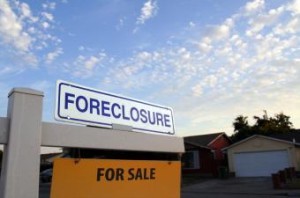
In order to fight the long-standing problem of vacant and abandoned homes, New York became the latest state to enact legislation to fight the adverse effect these properties, often called “zombie” properties, have on their surrounding communities.
New York Governor Andrew Cuomo signed the bill into law this week. The bill was passed as part of the 2016 Legislative Session and is considered to be a boon for the economic health and public safety of those communities in which these properties are located. It will also help those homeowners who are at risk of losing their homes due to foreclosure.
“For many New Yorkers, homes are our single most important investment, but that investment can be undermined by the blight of neglected and abandoned properties,” Cuomo said. “For each zombie home that we cure and for each that we prevent with this legislation, we are saving entire neighborhoods from the corrosive effect of blight and neglect. I thank my colleagues in the Assembly and Senate for seeing a crisis and helping to turn it into an opportunity for people to realize the great American Dream of homeownership.”
The bill includes the following provisions:
- Enhancement of the effectiveness of Mandatory Settlement Conferences, which are part of a law established in 2010 to help families fight foreclosures.
- Establishment of a Consumer Bill of Rights to prevent the homeowner from abandoning the property early when he/she learns the foreclosure process has begun.
- Creation of a Community Restoration Fund (CRF), a tool to help the State of New York Mortgage Agency (SONYMA) to assist homeowners facing foreclosure by purchasing defaulted mortgages and offering favorable modifications to help the homeowners remain in their homes. The CRF will also help expedite foreclosures and work with land banks, nonprofits, and community development financial institutions (CDFIs) to rehabilitate and resell vacant homes.
- Require banks or mortgagees to maintain the vacant and abandoned properties pre-foreclosure, as opposed to the previous requirement of maintaining the properties only after the foreclosure judgment. Banks face a penalty of up to $500 per day per property for failing to maintain these properties.
- Expedite foreclosure for vacant and abandoned properties by requiring the foreclosing party to move to auction within 90 days of obtaining a foreclosure judgment and require to the foreclosing party to ensure the property is reoccupied within 180 days of taking title.
- Establishing an electronic registry of vacant and abandoned properties to promote communication between local governments and banks or mortgagees that are responsible for property maintenance.
The New York legislation follows legislation passed in Ohio in May to stop the spreading of blight due to vacant and abandoned properties. Ohio enacted a “fast track” foreclosure bill into law in late May that will expedite the completion of a foreclosure and reduce the amount of time that a property remains vacant. The Ohio bill is widely considered to be a template for national legislation to curb the effects of vacant and abandoned properties.
Click here for more on the New York legislation.

 DSNews The homepage of the servicing industry
DSNews The homepage of the servicing industry










